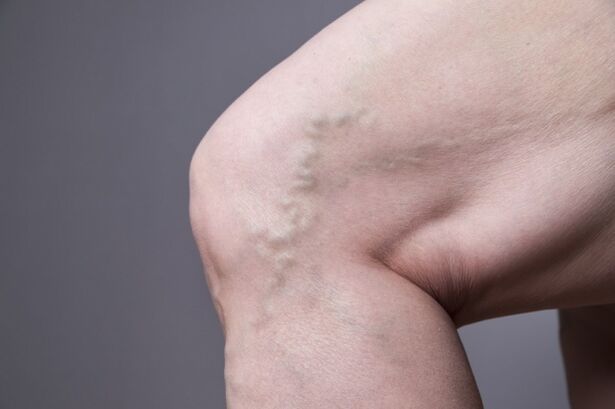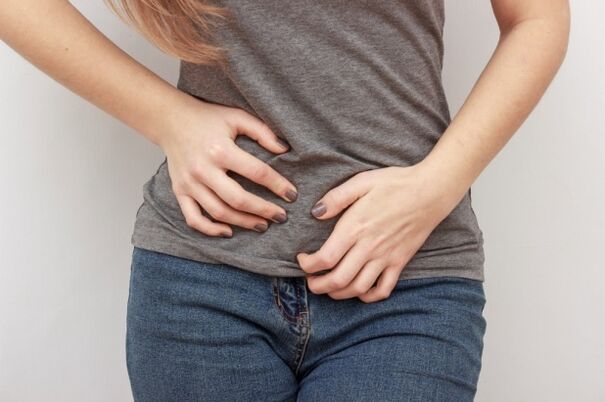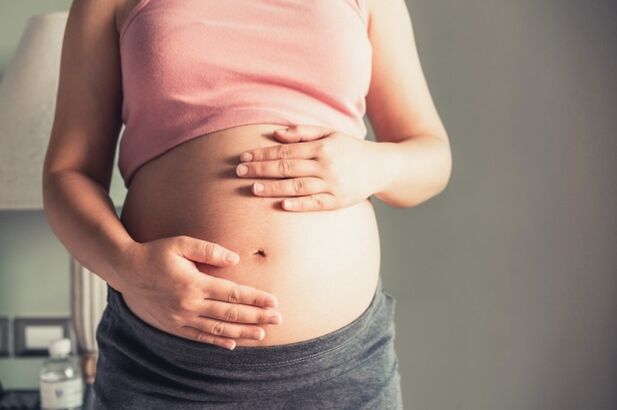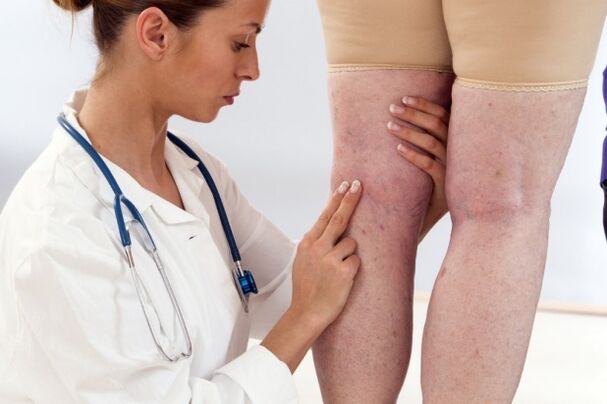Chronic venous insufficiency and varicos are widespread: statistics show that every third person is faced in developed countries.The special risk group includes representatives of decent sex, to whom this pathology causes both physical and psychological inconvenience.In this article, we examine why vascular diseases occur in women, their signs and symptoms, and what to do to treat and prevent the disease.
Varikoos Veins: Causes of Varicosis of Women
According to statistics, men are less likely to suffer varicos than women whose vascular disease is more common.What caused the gender of pathology?

- Characteristics of the hormonal background.During the monthly cycle, the woman's hormonal background is exposed to fluctuations, and during pregnancy, childbirth, breastfeeding and menopause, these changes become even more significant.The proportion of female sex hormones (estrogen and progesterone) has a direct effect on the condition of the vascular walls and the viscosity of the blood.
- Hormone therapy.Hormone therapy is the reception of combined oral contraceptives and taking the hormonal background, thus changing the ratio of estrogen and progesterone in the body.
- She wears shoes in the corner and tight pants.Unknown shoes, narrow lingerie and jeans - all of which trigger a violation of blood flow to the lower limbs and pelvis, leading to varicose veins.
In addition, only females, prerequisites for the development of pathology, women's varicose veins can provoke the following factors:
- Genetically determined tendency.According to statistics, 60% of the cases can be observed in varicose veins if one parent suffers from this pathology.
- Significant overweight.Obesity is one of the factors in the occurrence of varicose veins as the lower limbs exert increased pressure.
- Excessive load on the legs.If you are professionally engaged in running, jumping or lifting, you will create useful conditions for developing veins.
- Interruption of blood circulation caused by a fixed pose.If you spend most of the sun or a job, this is a serious prerequisite for the development of venous diseases.
- Unstable nutrition.Diet, poor fiber, vitamins and trace elements lead to disorders that affect the walls of blood vessels and blood composition.In addition, an unbalanced diet can cause constipation, which can also lead to changes in veins, especially the pelvic varicose.
- Diseases of endocrine and cardiovascular systems.Endocrine disorders trigger changes in the hormonal background, which in turn will be prerequisites for the formation of varicose veins.Cardiovascular pathologies (especially hypertension) also provoke the development of problems with veins.

Veins of varicose veins in the pelvic veins in women
The abnormal expansion of the pelvic vessels is a common problem with 15-25% of women of reproductive age.This disease is often mistaken for infectious and inflammatory processes, which are localized in the reproductive organs of the female urogenation system.Inadequate treatment is prescribed for improper diagnosis and the patient does not receive exemption.Consequently, the problem of diagnosing and appropriate therapy for the pelvis varicoosus is the urgent problem of modern flebology and gynecology.
Blood supply to the pelvic organs is the veins of the uterus and the ovary and the venous plexus vaginal, bubble-vaginal, awesome, the cause of the rectum plexus, etc.Usually caused by blood stagnation, which may be the cause of the following rooms:
- Sedentary lifestyle;
- previously handed over gynecological diseases;
- Violation of hormonal background (especially high levels of estrogen);
- History of pregnancy and childbirth;
- Congenital and acquired violation of connective tissue (namely collagen disadvantage).
The opinion in women is the presence of chronic pelvic pain syndrome.This is represented by the pain of the lower abdomen, radiated into the zone of the pubic, the sacrum and the leg.
The peak of pain is usually in the second half of the menstrual cycle, complemented by severe premenstrual syndrome and dysmenorrhea.Psychosomatic disorders can join these symptoms.

As noted above, diagnosis of pathology is difficult, as the symptoms of this disease of women in women can be misinterpreted as a sign of pure gynecological problems.Therefore, for correct diagnosis, transvaginal ultrasound, dopplerography, flebography will require diagnostic laparoscopy in some cases.
Both conservative and operational approaches are used to treat the veins of the small pelvis.
In the first case, the purpose of the treatment is to increase the sound of venous walls, to normalize blood flow and viscosity of blood.In order to solve these problems, patients are prescribed venotonics, hirudotherapy activities, ultrasound and magnetic therapy, and exercise therapy exercises.If the conservative therapy for this disease of the pelvis is ineffective, surgical intervention is performed - sclerosis or embolization in women pregnant with veins.
Problems with pregnant women's lashes
Varicoos are the problem of most pregnant women.This is due to changes in the body of pregnant mother during pregnancy.During this period, there is a complete restructuring of the hormone background, which is directly related to the condition of the blood vessels.For example, the increase in estrogens leads to a change in the structure of the muscle layer of venous walls and the spread of blood vessels.

In addition to hormonal changes that accompany pregnancy and birth, pregnancy and for other reasons, they are able to provoke the development of venous diseases.Above all, the increase in body weight and the simultaneous increase in the load on the lower limbs, as well as the excessive tension that the woman experiences during labor contractions.
During pregnancy, the increase in the total amount of circulating blood is observed, which occurs due to the growth of plasma and red blood cells.
Venus Diseases in Women: Symptoms and Signs
Depending on the stage of development, the legs varicos are manifested in different ways:
- The initial phase of the pathological process is not easy to notice, as its manifestation is usually minimal.Small vascular stars appear on the legs, in the evening it feels a slight discomfort, and by the end of the day there may be a slight swelling.Even if the clinical picture described does not cause much anxiety as they have the named symptoms, it is advisable to consult a doctor.
- If the disease is not found in the initial stage and treatment has not been initiated in time, the problems with veins will worsen.The venous grid is becoming more pronounced, the typical nodes and cereals can be clearly distinguished under the skin, swelling and blasting the lower limbs cause severe discomfort.
- If the disease has not been treated or treated effectively, it will be neglected.The affected veins are very prominent under the skin, constant edema, cramps occur at night, the skin in the legs can change the color and cover it with tropical ulcers.
Venus Diseases in Women: Treatment
Two main approaches to solving the problem can be distinguished: conservative and surgical.The first is usually used in the early stages of pathology, while the second is justified to overcome later stages of the disease.

Conservative therapy includes taking medicines, use of funds needed for external use, visiting physiotherapy sessions, wearing compression knitwear, correcting physical effort, daily routine, nutrition and alcohol consumption system.In addition, you can use additional tools to overcome varicos - such as Norman® Leos cream.Regular use on the lower limbs helps to get rid of swelling, fatigue, severity and discomfort, disappearance of night attacks and a reduction in vascular pattern.
Because of the natural composition, the cream can be used during pregnancy.
The surgical intervention is intended to complete or partial removal of varicos.Modern vascular surgery can offer the following types of operations:
- Combined with flebectomy.
- Laser coagulation.
- Radio frequency coagulation.
- Sclerosis.
When it comes to treating venous diseases of older patients in women aged 50-60, surgical intervention is usually not performed as this body is stress.























